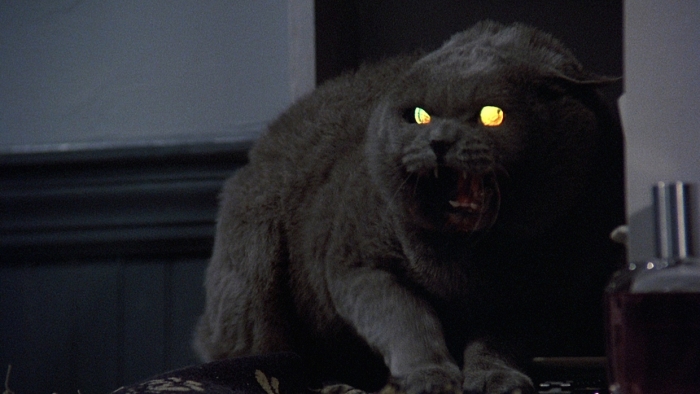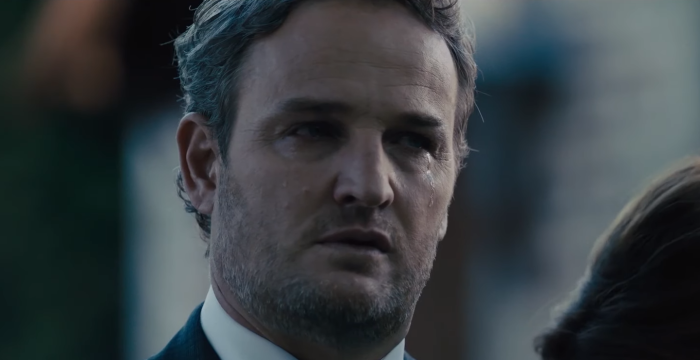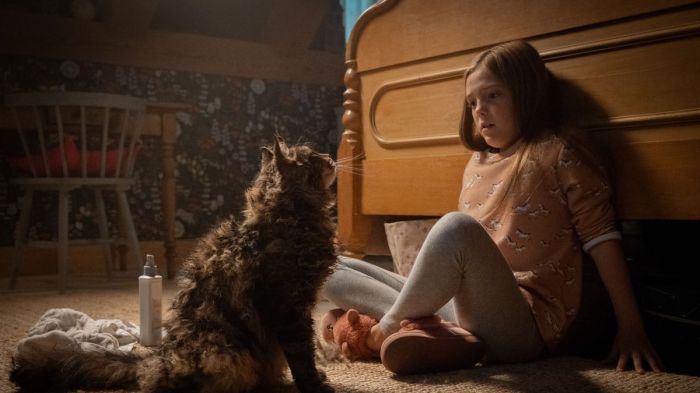Friends and readers (and everyone in between), rejoice! I’m back this week with an actual movie review, albeit one that came out a whole three and a half weeks ago (again I have to ask that you all cut me some slack – these are the lean times, and they’re almost over with the summer movie season kicking off later this week). Pet Sematary is a horror film that draws its scares from Stephen King‘s 1983 novel of the same name, and it’s also a remake of a 1989 film of the same name, which by all accounts got reviews as middling as the 2019 rendition wound up settling into. Indeed, I’ve been perplexed by the path to critical consensus that this year’s Pet Sematary followed, initially earning rave reviews at SXSW that hailed it as one of the best King adaptations ever, prompting its Rotten Tomatoes one-liner to simply read “Sometimes, remade is better” in a clear nod to one of the lines delivered by John Lithgow in the film and the film’s trailer. Where it ultimately landed in both the general critical sphere and in my own mind, though, is a far different place than that, and I want to delve into the reasons for that for a few paragraphs. Disclaimer: I have neither seen the 1989 rendition of Pet Sematary nor read the source novel, though I am a fan of King’s (I’m currently reading Mr. Mercedes, in fact, which is a different, sort of hard-boiled cop genre for him, but I’m quite enjoying it).

The OG on-screen spooky cat. How they got the eyes to look like that I know not.
My one-line summary of what makes Pet Sematary such a middling experience is that it’s for the most part maddeningly inconsistent. It’s possessing of sky-high highs, which is what I’m sure managed to captivate the SXSW crowds, but it also has a roughly equal measure of cellar-dwelling lows, and this is perhaps nowhere more prominent than in the cast. While John Lithgow is magnetic in his supporting turn as the pivotal and wizened Juddson Crandall, and while Amy Seimetz is pretty convincing, and frankly a revelation given her relative unknown standing amongst the cast, leading man Jason Clarke is actively and surprisingly bad, and for the most part really just never shows up. Equally uneven is the pacing of the film, as it feels at times (mostly in the front half) like there are a number of filler scenes that are breathlessly trying to get to things that the filmmakers deem more interesting – and they might be right that those scenes, which are mostly at the beginning, aren’t as interesting as the undead stuff towards the end – but having a palpable sense of rushing through exposition that would have been clunky even without the frantic pacing has never helped a movie ever, and it doesn’t here. The occasionally choppy editing – which at times features jump cuts to entirely different scenes when a character has only barely finished a line – doesn’t do Pet Sematary any favors either.

Jason Clarke knee-deep in one of many moments showcasing some poor acting.
But Pet Sematary has one consistent strength in that its premise and its core story are good – having been created by arguably this generation’s master of horror storytelling – and the film is therefore well-positioned to pose interesting questions about life, death, and what lies beyond, or even in between. The trouble is in the fact that in spite of making some great dramatic choices – giving a resurrection to a character that can actually speak about it rather than giving it to an infant, for one – Pet Sematary‘s script is frustratingly reductive with its morals and the deeper ideas at hand, often opting instead for violence and disturbing imagery that while at times effective is largely a mixed bag, and at other times feels gratuitous and/or self-serving. Also frustratingly reductive is the film’s approach to its numerous promising subplots, which at worst are brushed off with less than a second’s screentime and not given a further thought. In spite of all of this reduction, though, Pet Sematary impressively also has no real subtext to speak of, instead filling itself with shoddily written what-you-hear-is-what-you-get dialogue. In terms of macro-plotting, I was on board with the majority of its decisions, but (no spoilers) I’m a bit back and forth on its ending as of now (which was reportedly chosen from a number of endings based on test screenings).

This is eerily similar to the way me and my girlfriend’s cat typically regard each other.
It’s certainly not all bad, though. As I said before, there are some high highs in the form of solidly-crafted jump scares, great use of sound, and decent tension-building. Some viewers may lament its ultra-predictable trajectory, but I actually thought this was a plus in some scenes. The introduction of a graveyard that brings back dead animals naturally begs the question of what would happen if a human was buried there – this is in some sense the beauty of King’s story, and I can only imagine how great the book is given King’s ability to get inside of his character’s heads (which you’ll find is where a lot of Pet Sematary seems to take place, and while the numerous dream sequences are alright, they fail to tell the same transfixing story as a reader’s imagination, I’ll bet). In any case, at the point of the introduction of the resurrecting powers of the forest, we know a major character will die, and we’re essentially just waiting for it to happen – that’s a decent tension-building mechanic, even if the identity of the character, the nature of her demise, and the chaos that ensues upon her return is completely spoiled by the bafflingly long and revealing final trailer for the film. Not having the marketing material spoil essentially the entire film probably would have helped Pet Sematary out some – after all, an audience not knowing everything a priori (especially if the film deviates from the source material significantly, as Pet Sematary does) can only help to crank up the interest factor.

One thing I could have gone for much more of was usage of the spooky masks/masked children.
For me, Pet Sematary largely built to a single conclusion, and the thought that was evoked within me pretty much throughout, and it’s a thought that does a disservice to anything the film tries to accomplish. That thought is: “Wow, the book must be great,” and one thing that I can assuredly report after watching the film is that the novel has shot up towards the top of my summer reading list, if only so I can further investigate the places that the film deviated from it. As King adaptations go, though, it’s probably just as middle-of-the-road as the reviews suggest: I’ve seen far better (The Shawshank Redemption would be the obvious choice) and far worse (I watched this movie called Thinner once, which is an adaptation of another King novel of the same name, and all I have to say is wow). Unless you have a theater subscription service at hand, it’s probably not worth the $11, but it’s decent enough fun and contains a high enough scare quotient to be solid Redbox fodder.

John Lithgow probably said it best – when it comes to remakes, sometimes, dead is better.
And now, for a brief moment of hype-building: next week will most likely (I don’t have my viewing plans fully fleshed out yet) bring the Tuesdays with Cory of Endgame – spoiler content TBD. Check back in then!
[…] King’s work: The Shawshank Redemption, IT (2017), The Shining, Carrie (1976), The Mist, 1408, Pet Sematary (2019), The Dead Zone, Misery, Secret Window, and Thinner. This may sound like a fair few, but given […]
LikeLike
[…] just a hair too campy (Crawl), or flat-out missed the mark entirely on providing legitimate scares (Pet Sematary). See my review for Us […]
LikeLike